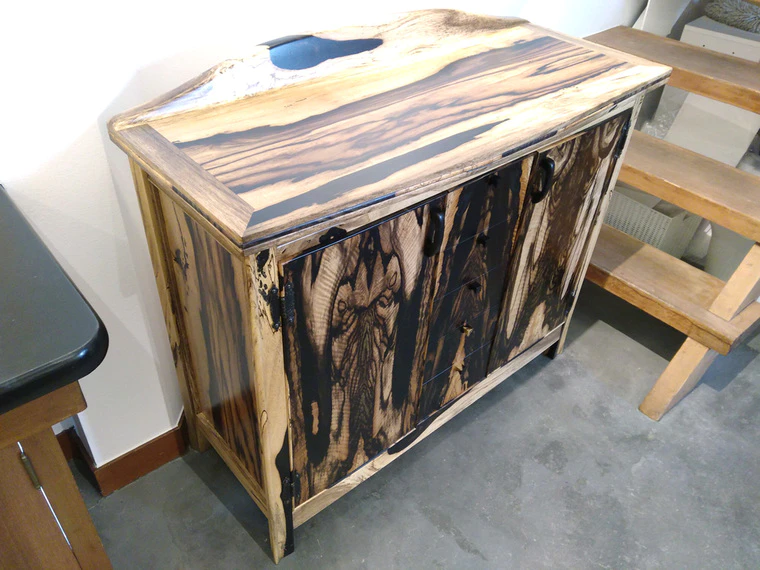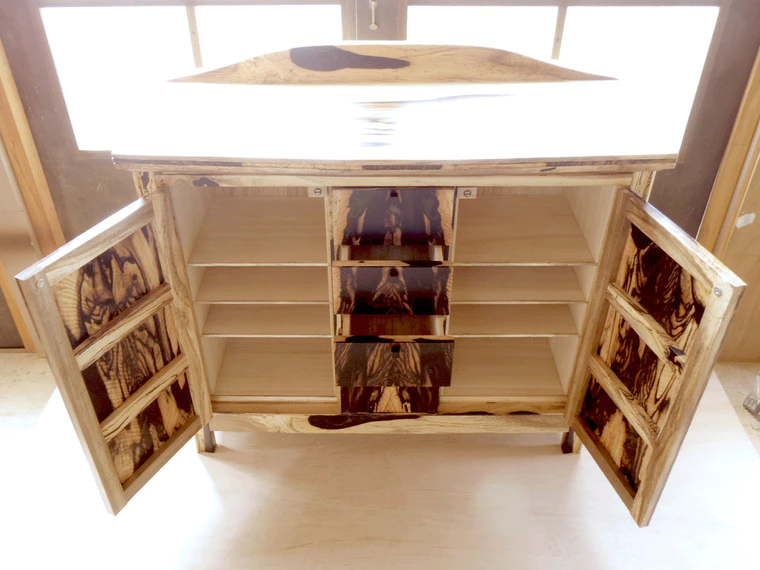Persimmon with black wood wardrobe
H 81 x W 96 x D 39 cm,Year.2018Katsuyuki Okada
1943 -- Wood and Bamboo
- Price Range Please Inquire
About the Artwork
Occasionally aged persimmon trees will have a rare black wood grain. This is called kurokaki or black persimmon.
Most Japanese trees grow more slowly than the trees of other countries, and persimmon trees are no exception. Also, while persimmon trees are deeply familiar to Japanese people, it is rare in nature for them to grow large enough to be used as material for building. Also, even if the wood develops a black wood grain, it is very rare for the black to spread evenly throughout the wood as it has for this piece.
Due to the black wood, this wardrobe is quite striking at first glance. While it can be difficult to tell from just photos, in reality, the black is reminiscent of sumi-e or ink wash painting.
Aside from the hinges and fittings, no metal has been used for the construction of this piece. Also, the metal fittings are re-purposed from an antique dresser, which have a darkness that is completely unlike modern metals. The fittings were carefully installed with the assistance of an experienced metal craftsman.The details of the craftsmanship are just as the photos show, for when the wardrobe is opened there is more dark wood grain inside. This piece is unique and rare within Japan, as well as high-quality.
Description
-
CategoryWood and Bamboo
-
MaterialsBlack persimmon wood
-
DimensionsH 81 x W 96 x D 39 cm
-
Year presented2018
-
InstructionsA clear coating has been painted on the piece, making it waterproof. However, the application of sudden heat (like setting directly under an air conditioning unit or placing a hot kettle on top)
or the impact of sharp tools like hammers is damaging to the materials and can cause cracks.
Again, chemical-based products (like nail polish) can lead the coating to peel off. Please be careful.
Techniques Used
Wood joinery
In wood joinery (sashimono), wood boards are cut into panels with care to how the grain patterns will fit together in the final piece. The wooden panels are then cut or carved to create interlocking joints. These joints, which are the key feature of wood joinery, make it possible to connect boards at right angles to produce boxes and other articles. Wood joinery is assembled without the use of nails or any other metal hardware.
Please feel free to contact us to commission work, check artworks available for purchase etc.



